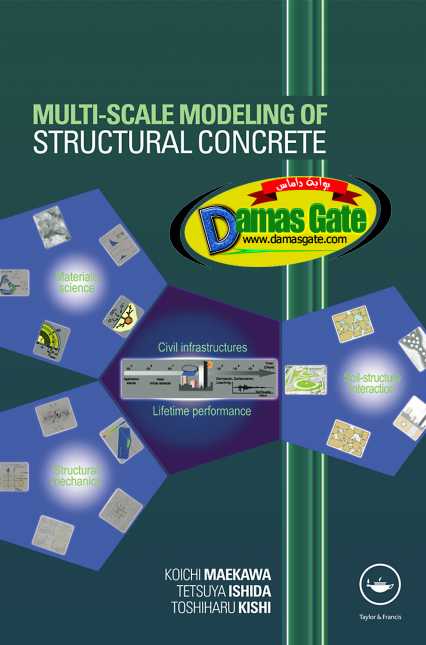Multi Scale Modeling of Structural Concrete

Preface
This book presents both micro-scale chemo-physics and semi-macroscopic mechanics of structural concrete, including crack-like damages and corrosion. The authors aim to present the mutual linkage of chemo-physics and mechanistic events which develop over the control volumes of different scales, and the way to simulate the macroscopic behaviors of structural concrete under combined external loads and ambient conditions. The heat hydration and temperature, carbonation and CO 2
penetration, chloride migration and corrosion of steel in concrete, calcium leaching and dynamics of micro-pore structures, moisture hygro-thermodynamics and creep and shrinkage, low and high cycle fatigue are computationally simulated and this strong mutual interaction is taken into account.
In 1999, the authors’ fi rst proposal to evaluate concrete performance with regard to durability was put together in a book entitled Modeling of Concrete Performance: Hydration, Microstructure and Mass Transport and the computer code named DuCOM (Durability COncrete Model) was partially released to the construction industries. Here, thermo-hygro physics, which concurrently advances inside multi-scale micro-pores with mutual linkage, were tried to be systematically integrated for macroscopic material properties and durability performances. Along these lines, further development on carbonation, chloride ion penetration, steel corrosion and calcium leaching has been combined, based upon the multi-scale platform. The research is still going on, but some of the integrated knowledge is being applied to engineering problems, such as life-cycle prediction of concrete structures and remaining life assessment of existing infrastructures. The authors decided that it was the right time to summarize the progress of the past decade in a consistent way. Thus, this book can be considered a revision of the previous publication.
Download
*